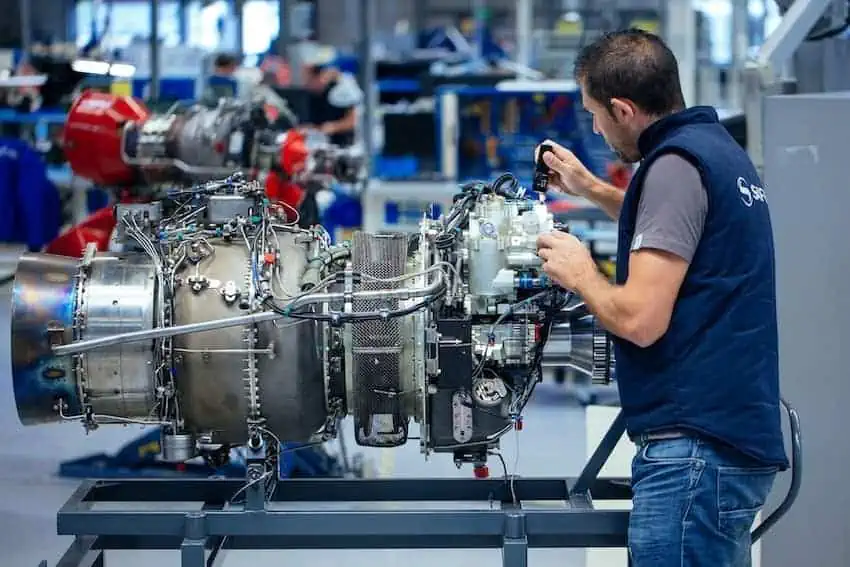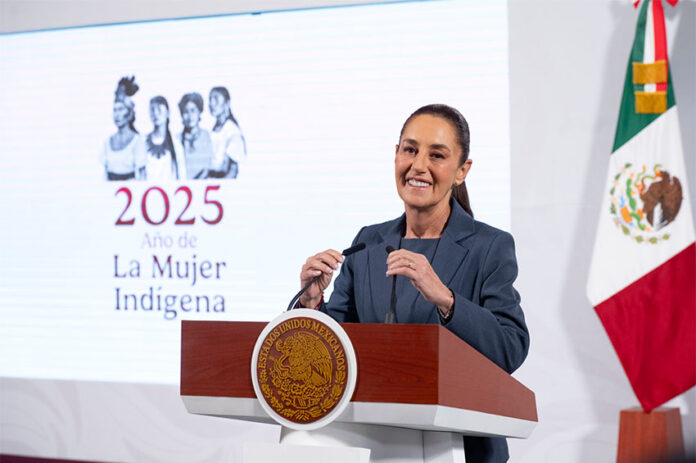After both the International Monetary Fund and the World Bank slashed their 2025 economic growth forecasts for Mexico, the federal government is at pains to paint a rosier picture.
President Claudia Sheinbaum has expressed her disagreement with the pessimistic forecasts, claiming that they don’t take into consideration her government’s plans to boost the economy.
At the president’s Thursday morning press conference, Finance Minister Marcelo Ebrard provided an update on the investment that is expected to flow into Mexico in the coming years, while Sheinbaum herself highlighted Mexico’s “macroeconomic stability” when asked a question about the performance of the Mexican peso.
Almost $300 billion in the investment pipeline
After Grupo Modelo executive Raúl Escalante announced a US $3.6 billion investment in Mexico over the next three years, Ebrard took center stage to present an update on Mexico’s so-called “Portfolio for Shared Prosperity.”
The portfolio is currently made up of 1,937 private sector projects across all 32 federal entities, Ebrard said.
It includes projects to be executed by both Mexican and foreign companies in Mexico.
Inversión de 3 600 millones de dólares entre 2025 y 2027 del Grupo Modelo en México : pic.twitter.com/9CYxduYluZ
— Marcelo Ebrard C. (@m_ebrard) April 24, 2025
Ebrard said that the 1,937 “confirmed projects” represent investment of US $298 billion between now and the end of the six-year term of the current government in 2030.
“More or less this represents 16% of the gross domestic product of our country — $298 billion Madam President, that’s what we have [in the investment pipeline],” he said.
The almost 2,000 investment projects include those announced by major companies such as Tesla, BYD, Walmart, Amazon and Mercado Libre.
Despite global uncertainty due to the United States’ protectionist policies and other factors, Ebrard said that none of the announced projects have been canceled.
However, there is no guarantee they will all go ahead either.
For example, the construction of a so-called Tesla “gigafactory” in Nuevo León — announced by the company more than two years ago — doesn’t currently appear to be overly likely.
Why invest in Mexico? For its hard-working people, Sheinbaum says
Asked to identify the “advantages” of investing in Mexico compared to other countries, Sheinbaum promptly cited Mexico’s “hardworking” people.
“This image that was promoted for a period, of a Mexican with a sombrero sitting down under a nopal cactus as if we were lazy, is completely false,” she said.
“The people of Mexico work here and our migrants work there and drive the economy of the United States forward,” she said.

“So that is the first thing,” Sheinbaum said.
She also mentioned that the availability of “skilled” labor in Mexico has increased, and continues to increase, telling reporters that Mexico is among the world’s largest trainers of engineers.
Sheinbaum highlighted that “cheap labor” used to be the top selling point for investors in Mexico, but asserted that is no longer the case.
“Mexico is great and it has everything to keep on developing,” she added.
Is the ‘super peso’ making a return?
A reporter noted that the Mexican peso was trading at 19.57 to the US dollar on Thursday morning and asked the president why the currency had strengthened at a time when there are “tariff tensions” with the United States.
“There is a lot of strength in the Mexican economy, there is macroeconomic stability, responsibility in the use of public resources, in the use of the budget,” Sheinbaum responded.
“In other words, the macroeconomic variables are good,” she said.
“There is a Bank of Mexico with autonomy, that is taking good decisions. Interest rates were lowered here,” Sheinbaum added.
She also attributed the strength of the peso to the absence of inflation, even though Mexico’s headline rate was close to 4% in the first half of April, up from 3.80% across March.
“There is no inflation. The inflation level just came out, it’s the same number as last month,” Sheinbaum said.
“So there is macroeconomic stability. Then there is public investment, private investment and there is an [economic plan],” she said, referring to the government’s Plan México initiative.
“And there is political strength, social strength, economic strength in the country. That is shown in the stability of our currency,” Sheinbaum said.
The peso reached an almost nine-year high of 16.30 to the dollar in April 2024, but depreciated significantly later in the year.
It depreciated to above 21 to the dollar earlier this month, but bounced back after U.S. President Donald Trump’s April 9 announcement that he was lowering the United States’ maximum “reciprocal tariff” rate to 10% for at least the next 90 days.
By Mexico News Daily chief staff writer Peter Davies (peter.davies@mexiconewsdaily.com)
